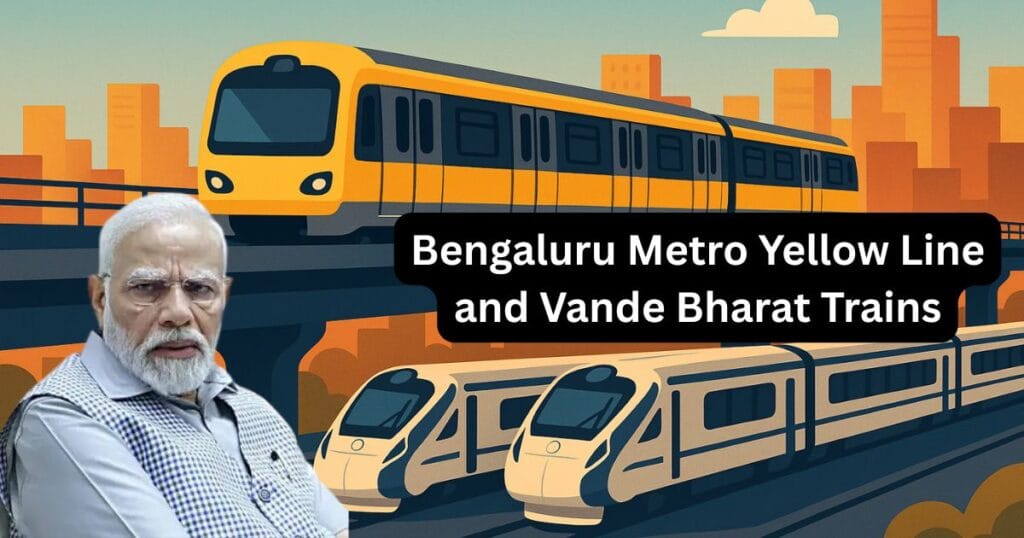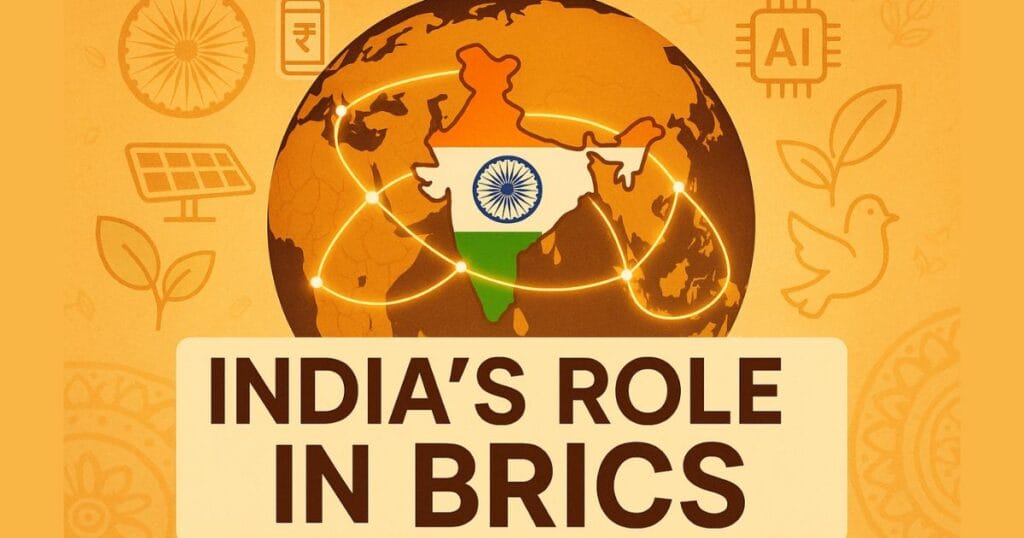On August 10, 2025, a grand event took place in Bengaluru, where Prime Minister Narendra Modi launched several game-changing projects. These include the inauguration of the Bengaluru Metro Yellow Line, the foundation stone for Metro Phase 3, and the flagging off of three new Vande Bharat trains. These initiatives are set to strengthen India’s infrastructure, making travel faster, easier, and more comfortable for millions. Let’s dive into these projects in simple language to understand their impact and why they matter to you.

Bengaluru Metro Yellow Line: A Lifeline for the City
The Bengaluru Metro Yellow Line is now open, bringing much-needed relief to the city’s residents. This line stretches 19.1 kilometers from RV Road in south Bengaluru to Bommasandra, with 16 stations along the way. It’s a boon for people working in areas like Electronic City, a major IT hub.
Why is the Yellow Line Special?
- Traffic Relief: Bengaluru’s roads are notorious for traffic jams. The Yellow Line helps commuters avoid congestion, saving time. For instance, traveling from Electronic City to the city center now takes minutes instead of hours.
- Made in India: The trains on this line are built under the Make in India initiative. Titagarh Rail Systems manufactured these coaches, showcasing India’s engineering prowess.
- Convenient Timings: The metro runs from 6:30 AM to 10:42 PM, making it easy for people to travel early in the morning or late at night.
- Cost: The project cost around ₹5,745 crore, expanding Bengaluru’s metro network to 96 kilometers.
Why the Delay?
The Yellow Line was supposed to start in 2021 but faced a four-year delay due to:
- Land Acquisition Issues: Securing land for stations and tracks took time.
- Supply Chain Hiccups: Initially, coaches were to come from China, but geopolitical tensions halted this.
- Software Delays: The train’s software systems also faced setbacks.
Now, everything is sorted, and passengers have been riding the Yellow Line since August 11, 2025. If you’re in Bengaluru, check out our guide on metro ticket booking tips for a smooth commute.
Official Bengaluru Metro Website – for route maps, fare details, and operational updates
Metro Phase 3: Shaping Bengaluru’s Future
On the same day, Prime Minister Narendra Modi laid the foundation for Bengaluru Metro Phase 3. This project spans 44 kilometers and includes 31 stations, all elevated (built above ground).
Key Features of Phase 3
- Enhanced Connectivity: This phase will link residential areas to offices, factories, and the Kempegowda International Airport. It’s a game-changer for frequent flyers.
- Traffic Reduction: Experts estimate Phase 3 could cut Bengaluru’s traffic by 30%.
- Cost: The project is budgeted at ₹15,611 crore.
- Eco-Friendly: By reducing car usage, the metro will help lower pollution, making Bengaluru more sustainable.
Phase 3 will make Bengaluru a more connected and environmentally friendly city. For more metro updates, visit our metro news section.
Three New Vande Bharat Trains: Fast, Comfortable, and Modern
On August 10, from KSR Railway Station in Bengaluru, the Prime Minister flagged off three new Vande Bharat trains. These trains, built under Make in India, come with modern amenities like:
- Wi-Fi: Stay connected during your journey.
- GPS Tracking: Know your train’s location in real-time.
- Comfortable Seats: Relax even on long trips.
These trains connect different parts of India, cutting travel time and boosting tourism, business, and connectivity. Here’s a closer look at each:
1. Bengaluru – Belagavi Vande Bharat
- Distance and Time: Covers ~500 km in 6-7 hours.
- Why It Matters: Links Bengaluru, an IT hub, with Belagavi, an industrial and historical city. This will drive business and job opportunities.
- Launch Vibe: The first journey saw huge excitement, with a festive atmosphere at the station.
2. Nagpur (Ajni) – Pune Vande Bharat
- Distance and Time: Covers 885 km in 8-9 hours, making it the longest Vande Bharat route yet.
- Why It Matters: Connects two major Maharashtra cities, boosting trade, education, and tourism.
- Fun Fact: This is the longest Vande Bharat route in India so far.
3. Katra – Amritsar Vande Bharat
- Distance and Time: Covers 250 km in 4-5 hours.
- Why It Matters: Links Shri Mata Vaishno Devi shrine in Katra to Amritsar, making pilgrimages easier. It also strengthens ties between Punjab and Jammu & Kashmir.
- Key Benefit: A big win for religious tourism.
Why These Projects Matter
These initiatives are transforming India’s infrastructure. The Bengaluru Metro Yellow Line and Phase 3 will ease city traffic, letting people move quickly and efficiently. Meanwhile, Vande Bharat trains are bringing distant cities closer, with speed and comfort. These aren’t just trains or metro lines—they’re steps toward a faster, greener, and more connected India.
Local and Political Buzz
The event saw Karnataka’s Chief Minister Siddaramaiah and Deputy Chief Minister DK Shivakumar in attendance. There was some chatter about who deserves credit for these projects, but for the average person, what matters is the convenience. Faster travel, less traffic, and modern facilities—that’s the real win.
ALSO READ- Why is Modi Ji asking to adopt Swadeshi in the tariff war with America?
How will the Bengaluru Metro Yellow Line help daily commuters?
The Yellow Line will save a lot of travel time, especially for people working in Electronic City and nearby areas. Instead of sitting in traffic for hours, you can now reach the city center in minutes.
Why was the Yellow Line project delayed for so long?
It was supposed to open in 2021, but there were issues with land acquisition, coach supply (originally from China), and train software. Now, with everything sorted, it’s finally running.
What’s special about the new Vande Bharat trains?
They’re faster, more comfortable, and come with features like Wi-Fi, GPS tracking, and better seating. They connect key cities, making travel smoother for work, tourism, and even religious trips.
Conclusion: A New Chapter for India
The Bengaluru Metro Yellow Line, Phase 3 foundation, and three new Vande Bharat trains mark a milestone in India’s growth. Whether you’re commuting in Bengaluru or traveling across states, these projects save time, effort, and money. They’re making cities more livable and the country more connected.
What do you think? How will these projects change your daily life? Drop your thoughts in the comments below. If you found this article helpful, share it with friends and subscribe to our newsletter for more updates on India’s progress.


